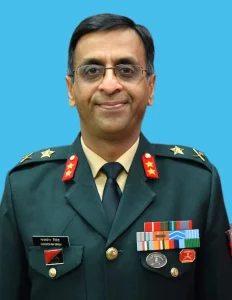Medieval India, spanning roughly from the 8th to the 18th century, is a fascinating period characterized by the rise and fall of several powerful dynasties, the establishment of vast empires, and significant socio-cultural and economic transformations. For AFCAT 2 2024 aspirants, understanding the history of Medieval India is crucial for the static General Knowledge (GK) section. This article provides an overview of key dynasties, significant rulers, major events, and cultural developments during this period.
AFCAT 2 2024 Exam Static GK: History Class 1 Medieval India
Early Medieval India (8th to 12th Century)
The Rajput Kingdoms
Overview
The Rajputs were a prominent warrior class in North and Central India. They established several kingdoms and were known for their valor and chivalry.
Key Kingdoms and Rulers
- Pratiharas
- Ruler: Mihira Bhoja (c. 836–885 AD)
- Contributions: The Pratiharas were instrumental in resisting Arab invasions in Western India.
- Chauhans
- Ruler: Prithviraj Chauhan (c. 1178–1192 AD)
- Contributions: Known for his resistance against the Ghurid invasions led by Muhammad Ghori.
The Cholas
Overview
The Chola dynasty was one of the longest-ruling dynasties in South India, known for its naval power and contributions to art and architecture.
Key Rulers
- Rajaraja Chola I (c. 985–1014 AD)
- Contributions: Expanded the Chola Empire and built the Brihadeshwara Temple in Thanjavur.
- Rajendra Chola I (c. 1014–1044 AD)
- Contributions: Extended the empire to Southeast Asia and established a strong naval presence.
The Pala Empire
Overview
The Pala Empire was a major power in Eastern India, known for its patronage of Buddhism and educational institutions like Nalanda University.
Key Rulers
- Gopala (c. 750–770 AD)
- Contributions: Founder of the Pala dynasty, stabilized the region after a period of anarchy.
- Dharmapala (c. 770–810 AD)
- Contributions: Expanded the empire and promoted Buddhism.
The Delhi Sultanate (1206–1526)
Overview
The Delhi Sultanate marked the beginning of Muslim rule in India and was established after the defeat of Prithviraj Chauhan by Muhammad Ghori.
Key Dynasties and Rulers
- Slave Dynasty (1206–1290)
- Ruler: Qutb-ud-din Aibak (1206–1210)
- Contributions: Established the Qutb Minar and consolidated the Sultanate.
- Khilji Dynasty (1290–1320)
- Ruler: Alauddin Khilji (1296–1316)
- Contributions: Expanded the Sultanate to the Deccan and implemented market reforms.
- Tughlaq Dynasty (1320–1414)
- Ruler: Muhammad bin Tughlaq (1325–1351)
- Contributions: Known for ambitious projects like shifting the capital to Daulatabad and token currency.
- Lodi Dynasty (1451–1526)
- Ruler: Sikandar Lodi (1489–1517)
- Contributions: Strengthened the Sultanate and built the city of Agra.
The Mughal Empire (1526–1857)
Overview
The Mughal Empire was one of the largest and most influential empires in Indian history, known for its cultural and architectural achievements.
Key Rulers and Their Contributions
- Babur (1526–1530)
- Contributions: Founded the Mughal Empire after defeating Ibrahim Lodi at the Battle of Panipat.
- Akbar (1556–1605)
- Contributions: Known for his policy of religious tolerance, administrative reforms, and cultural patronage.
- Shah Jahan (1628–1658)
- Contributions: Commissioned the construction of the Taj Mahal and other architectural marvels.
- Aurangzeb (1658–1707)
- Contributions: Expanded the empire to its greatest extent but faced significant resistance and internal strife.
Cultural and Economic Developments
Art and Architecture
- The Mughal era saw the construction of iconic structures like the Taj Mahal, Red Fort, and Jama Masjid.
- The Chola period was known for Dravidian temple architecture, exemplified by the Brihadeshwara Temple.
Literature and Learning
- Sanskrit and regional languages flourished, with notable works like Kalhana’s Rajatarangini and Jayadeva’s Gita Govinda.
- The Mughal period saw the compilation of texts like the Akbarnama and Ain-i-Akbari.
Economy and Trade
- Trade flourished under the Mughals, with India becoming a major exporter of textiles, spices, and precious stones.
- The Cholas developed extensive trade networks with Southeast Asia and China.
Conclusion
Understanding the history of Medieval India is essential for AFCAT 2 2024 aspirants. This period, marked by the rise and fall of powerful dynasties, significant cultural contributions, and economic prosperity, offers a rich tapestry of events and personalities that shaped the subcontinent. Familiarize yourself with these key aspects to enhance your static GK knowledge and excel in the AFCAT 2 2024 exam.




















